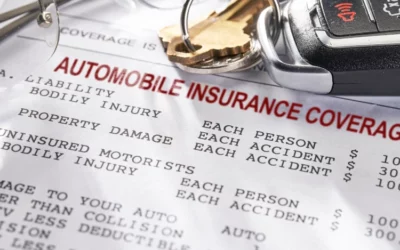Four Common Driving Habits That Are Technically Illegal
This post discusses 4 common driving habits that most drivers do but that are technically illegal. These minor violations are often the basis for what attorneys call a pretextual traffic stop. In other words, police use a minor traffic infraction as a pretext for a traffic stop when the real purpose of the stop is some other reason.
These minor traffic violations on their own are generally so insignificant that no one notices or cares. But police officers use technical violations of minor traffic laws as a basis to pull over drivers and hunt around for a bigger violation.
For example, pretextual stops are often used as a lead up to a DUI investigation. The officer will then argue that the minor traffic violation was a sign of impairment. Then the driver may be in a difficult position even if they are not actually impaired.
Police officers also might use a pretextual stop in an effort to search a driver’s vehicle. Here again, the officer is just looking for a reason to stop a driver. Noticing a technical violation of the law, the officer initiates a stop. Then the officer tries to get the driver to consent to a search of the vehicle in the hope that the officer can find drugs, or some other more serious violation.
Many drivers aren’t worried about these pretextual stops. However, we’ve seen plenty of situations where a driver thought they “I have nothing to worry about, I haven’t done anything wrong”, but the police find something anyway. Then the driver finds himself or herself involved in a criminal matter, maybe their car gets impounded, and maybe they get booked into jail.
Here are 4 common driving habits that are technically illegal:
Wide Turns
Technically, when you make a turn, you are supposed to turn into the nearest lane. See A.R.S. 28-751. Examples of a wide turn include:
Making a right turn and not turning into the rightmost lane.
Making a left turn onto a multi-lane road, and not turning in the leftmost lane. I do this all the time when I’m turning left but need to make an immediate right. I make the turn into the far-right lane so I can make my next turn. Technically this isn’t allowed. And this kind of turn can result in an accident if oncoming traffic is making a right and fails to notice you.
Using a mobile device.
It is technically illegal in most states now to even just hold a phone while driving. In Arizona, A.R.S. 28-914 prohibits holding or supporting a mobile phone with any part of your body. Another issue with using a phone is that drivers sometimes weave within their lane while on the phone. Weaving within a lane is a cue officers use to identify impaired drivers.
No turn signal
According to A.R.S. 28-754, drivers are required to signal turns and lane changes. The law requires a turn signal if “any other traffic may be affected by the movement.” The law also requires that a turn signal be “given continuously during not less than the last one hundred feet traveled by the vehicle before turning.”
Following Too Closely.
Stay tuned for a separate post about following distances, maybe with some math! The bottom line though is most drivers dramatically underestimate reaction times and stopping distances. Following too closely is an easy reason for a police officer to initiate a traffic stop. See A.R.S. 28-730A.
The irony is we frequently see police officers severely tailgating other vehicles. Police offers are subject to the same reaction times and rules of physics as the rest of us, but they do many things that would result in tickets for the normal driver.
Latest Blog Posts
Yavapai County Superior Court Judge Cele Hancock Resigns Following DUI Conviction
Cele Hancock was a judge in the Superior Court in Yavapai County. She recently resigned after being convicted of a DUI. Ms. Hancock was elected in 2010 to the Superior Court in Yavapai County - she ran unopposed! Unbelievably, she ran unopposed again in 2014, 2018,...
SR22 Insurance – What is it, and When do you need it?
SR-22 insurance is not a type of insurance, even though it is often referred to as insurance. It is actually a certificate or form that an insurance company provides to the MVD on a monthly basis to prove you have insurance that meets Arizona’s minimum insurance requirements.
Chris Rike is a founding partner of Traffic Law Guys, an Arizona law firm committed to protecting the rights of drivers facing criminal traffic charges.


